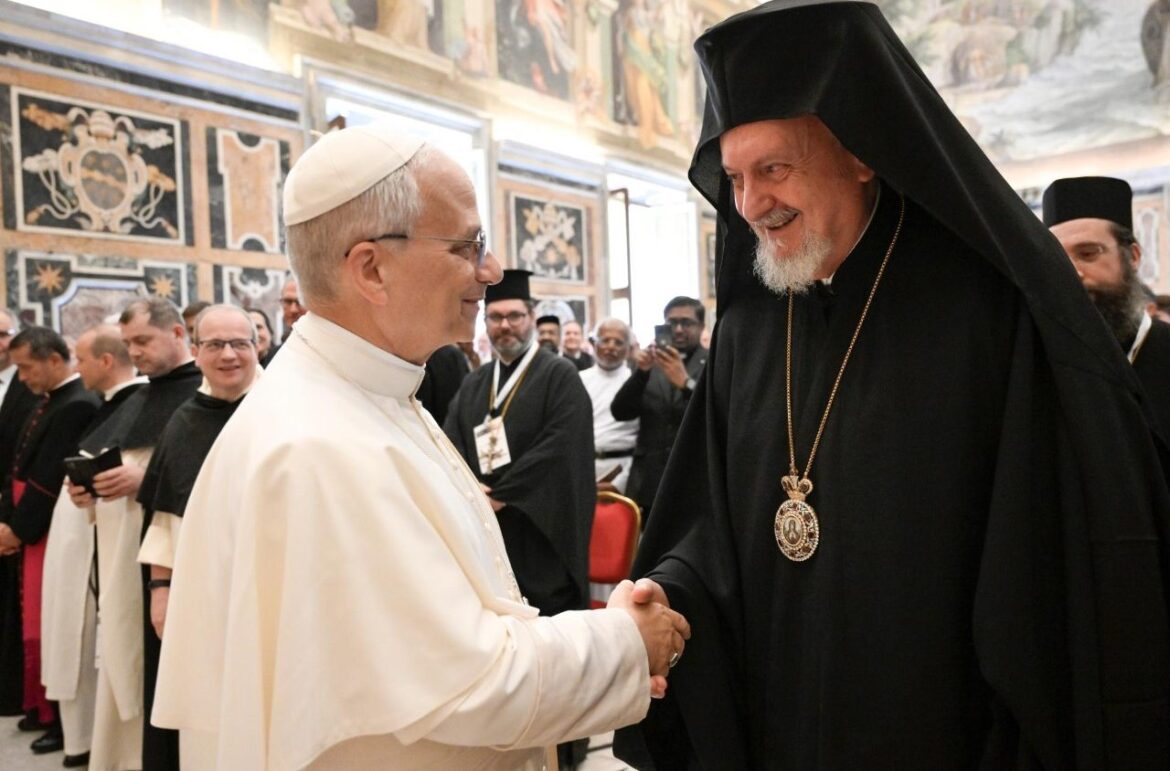
After the announcement of Pope Leo XIV’s visit to Türkiye for the 1,700th anniversary of the Council of Nicaea, Metropolitan Emmanuel of Chalcedon explains the importance of the ecumenical ties between the Popes and the Patriarchs of Constantinople.
By Delphine Allaire
Pope Leo XIV will make an Apostolic Journey to Türkiye on November 27-30 to celebrate the 1,700th anniversary of the Ecumenical Council of Nicaea with a pilgrimage to the city now known as İznik.
After the announcement on October 7, Metropolitan Emmanuel of Chalcedon, who works closely with the Ecumenical Patriarch of Constantinople, Bartholomew I, spoke to Vatican News about the Pope’s visit.
Each year, the Patriarchate sends a delegation to Rome for the feast of Sts. Peter and Paul on June 29, and the Pope reciprocates by sending a delegation to Istanbul for the feast of St. Andrew the Apostle on November 30.
This year, Pope Leo himself will make the ecumenical visit that has become a yearly exchange to build unity and understanding between the Orthodox and Catholic Churches.
Q: What does the upcoming visit of Pope Leo XIV to İznik (Nicaea), the city that will become the destination of his first Apostolic Journey abroad, represent for you?
His is a visit to the Ecumenical Patriarchate, at the invitation of His Holiness Patriarch Bartholomew, for a pilgrimage together to celebrate the 17th centenary of the First Ecumenical Council of Nicaea. We approach this visit with great joy.
This exchange and this visit to the Church of Constantinople, in Istanbul, has been taking place since Pope Paul VI. Until now, the visit was limited only to Ankara, the capital, then to Istanbul for the visit to the Ecumenical Patriarchate and to the Catholic communities.
That is why Nicaea was not, until now, on the agenda, but the 17th centenary—the anniversary that we are celebrating this year to mark the centenary of the 17th centenary of the Council of Nicaea of 325—provides the opportunity for this joint visit.
It will be a celebration with the presence of other guests, primates, and fraternal delegates of other Christian Churches, since this Council is the one that notably produced the first seven articles of the Creed, the other five having been completed by the Second Ecumenical Council of 381.
The Council of Nicaea was important for our faith and for dogma—especially the Creed, which is shared by all Christians.
Q: How are relations today between the Catholic Church and the Greek Orthodox Church?
Relations between the Church of Rome and the Church of Constantinople are excellent. The dialogue continues. The theological dialogue is advancing—not only with the Ecumenical Patriarchate, but with all the autocephalous Orthodox Churches.
We still have points to clarify, but we have made much progress up to now, thanks to the initiatives of recent decades, after the lifting of the anathemas (mutual excommunications, ed.) of 1054. This year, we are celebrating the 60th anniversary of that lifting, which shows that we have nevertheless overcome many obstacles.
We are on the right path toward the realization—in the near future, I hope—of communion between our two sister Churches.
Q: Patriarch Bartholomew has fostered several friendships with the most recent Popes—Francis, Benedict XVI, John Paul II. What can be said about these personal and friendly ties?
One could, moreover, go back to Paul VI and Athenagoras. It was in the time of Paul VI and Athenagoras that these relations began, thanks to the meeting in Jerusalem in 1964.
During the pontificates of John Paul II, Benedict XVI, and Francis, these contacts—made up of reciprocal visits and exchanges—have shown that personal contacts and mutual knowledge are also necessary to advance in the dialogue.
It is not only a dialogue on a theoretical level; it is also advancing on a practical level.
Q: So, we’re looking at the period spanning 1964 to2025. After the “spirit of Jerusalem,” will the “spirit of Nicaea” blow?
Absolutely. It is enough to see how, following the meeting in Jerusalem in 1964, after the lifting of the anathemas in 1965, there has been a new stage, a new period in relations between our two Churches that shows there is a possible future.
There is certainly still work to be done, but there is, at this moment, a better knowledge of one another—whereas for a long period there was ignorance…
Now we are entering a period in which we accept the other, we know the other better, and we are now, notably through these exchanges, establishing much deeper ties that will help us to accomplish Christ’s own will: that all may be one.

